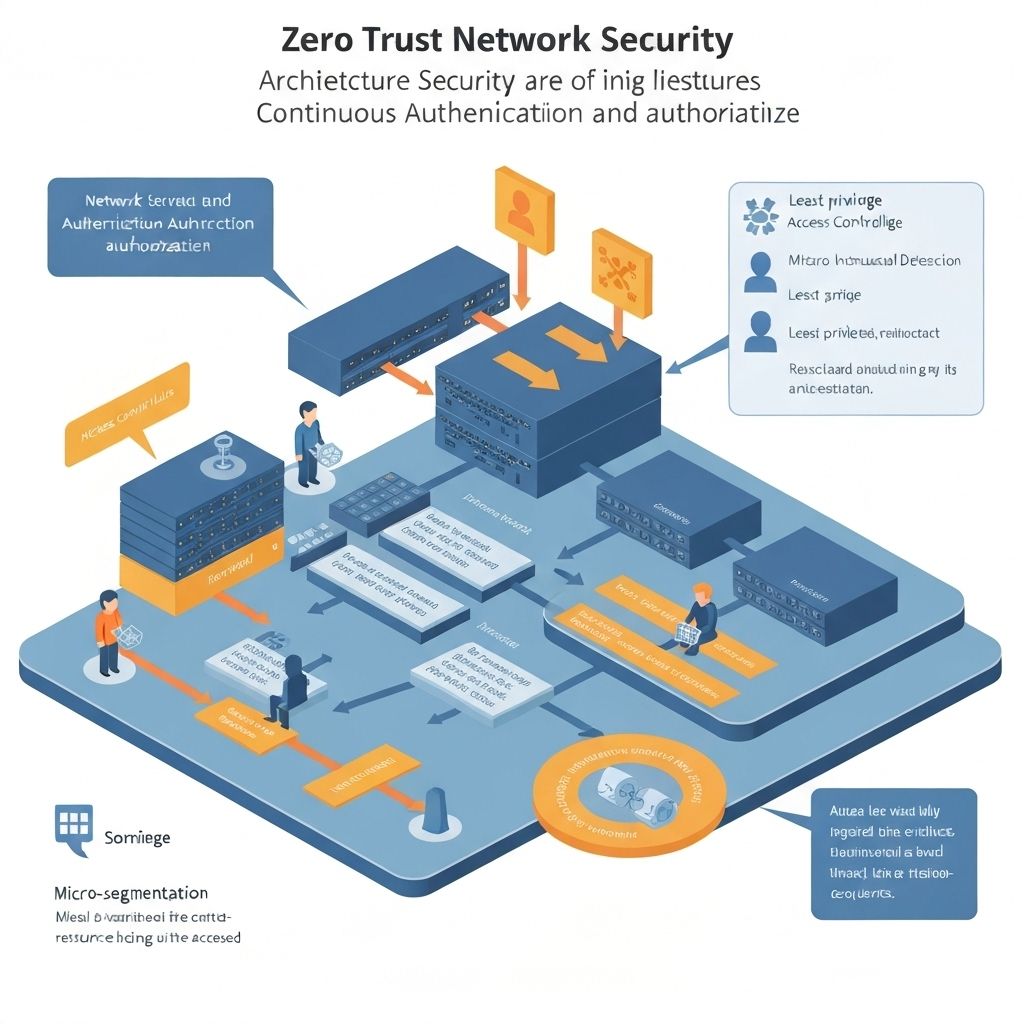Implementing Zero Trust Architecture in Enterprise Networks

Implementing Zero Trust Architecture in Enterprise Networks
The traditional castle-and-moat approach to network security is no longer sufficient in today's threat landscape. Zero Trust Architecture (ZTA) represents a paradigm shift in how we approach network security, operating on the principle of "never trust, always verify."
Understanding Zero Trust Principles
Zero Trust is built on several core principles:
- Verify explicitly - Always authenticate and authorize based on all available data points
- Use least privilege access - Limit user access with Just-In-Time and Just-Enough-Access (JIT/JEA)
- Assume breach - Minimize blast radius and segment access
Implementation with Cisco ACI
Cisco Application Centric Infrastructure (ACI) provides an excellent foundation for Zero Trust implementation:
Micro-segmentation
ACI's policy-based approach allows you to create granular security zones. Each application or workload can be isolated in its own End Point Group (EPG), with contracts defining allowed communication.
# Example ACI Contract Configuration
Contract: Web-to-DB
Subject: HTTPS-Traffic
Filter: tcp/443
Provider EPG: Database-Tier
Consumer EPG: Web-Tier
Identity-Based Access
Integration with Cisco ISE enables identity-aware policies that follow users across the network, regardless of their location or device.
Palo Alto Firewall Integration
Palo Alto Networks firewalls complement ACI by providing:
- App-ID for application-level visibility and control
- User-ID for user-based policies
- Content-ID for threat prevention
Best Practices
- Start with visibility - understand your traffic flows before implementing restrictions
- Implement gradually - begin with monitoring mode, then move to enforcement
- Use automation - leverage APIs for consistent policy deployment
- Monitor continuously - implement logging and alerting for policy violations
Challenges and Solutions
Challenge: Legacy applications that don't support modern authentication Solution: Implement application proxies or use network-based authentication as a transitional measure
Challenge: Performance impact of increased inspection Solution: Use hardware acceleration and optimize inspection policies based on risk assessment
Conclusion
Zero Trust Architecture is not a product but a journey. By combining Cisco ACI's micro-segmentation capabilities with Palo Alto's advanced threat prevention, organizations can build a robust security posture that adapts to modern threats.
The key is to start small, measure results, and continuously improve your security policies based on real-world data and threat intelligence.